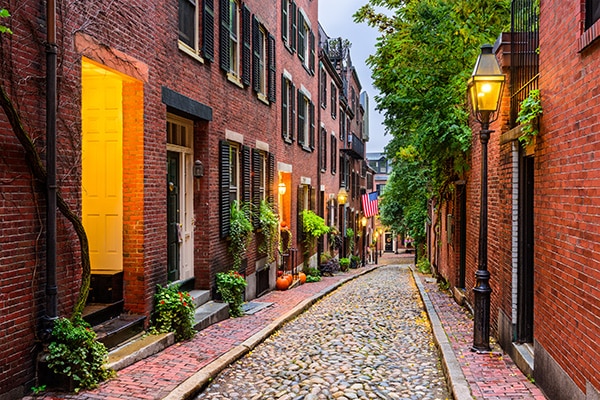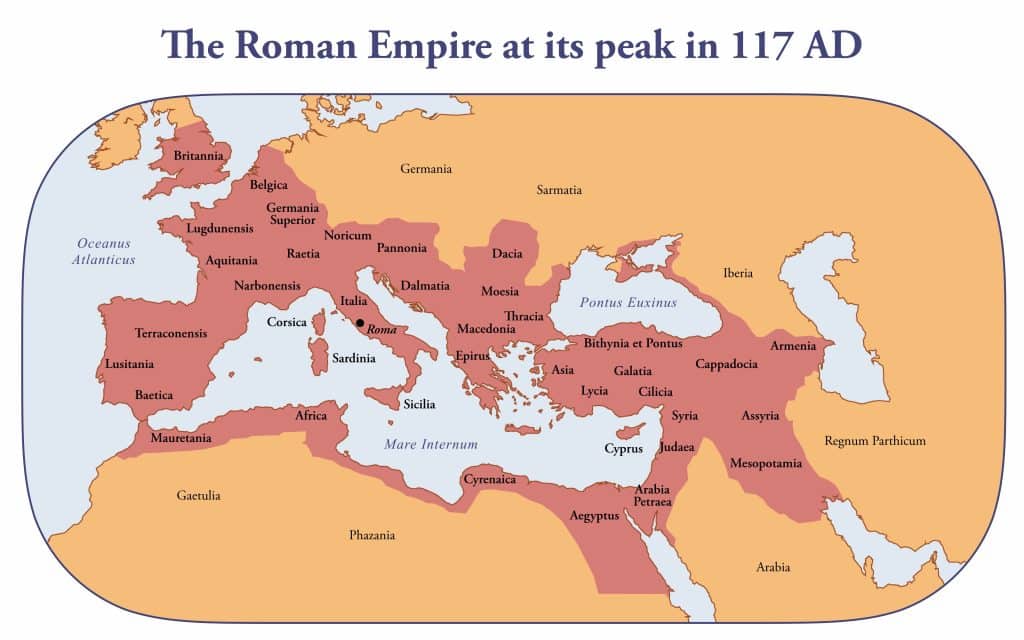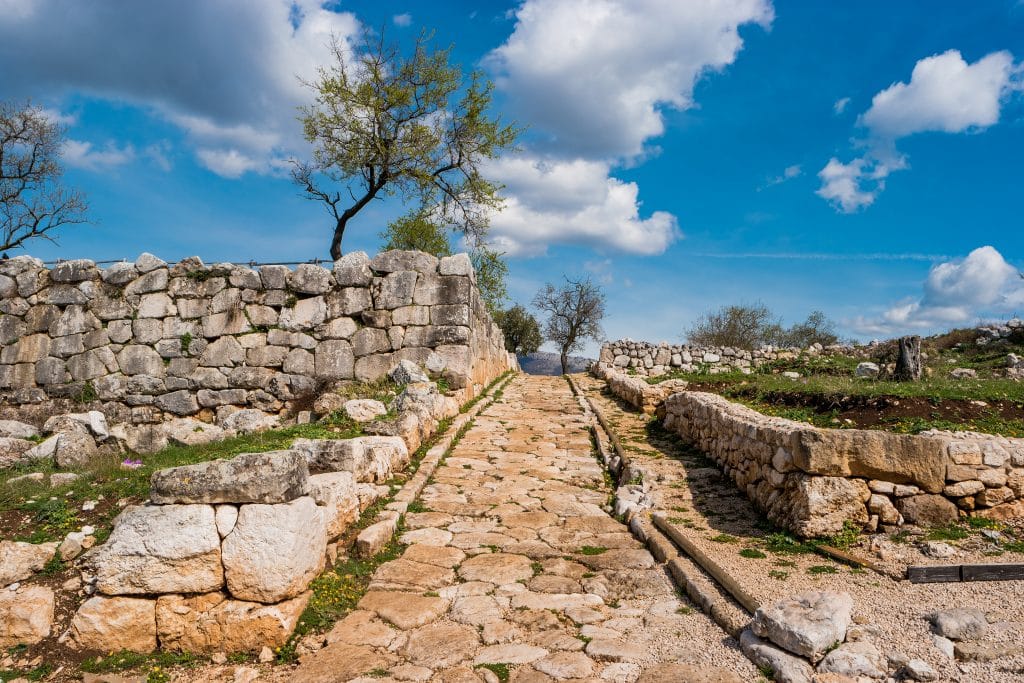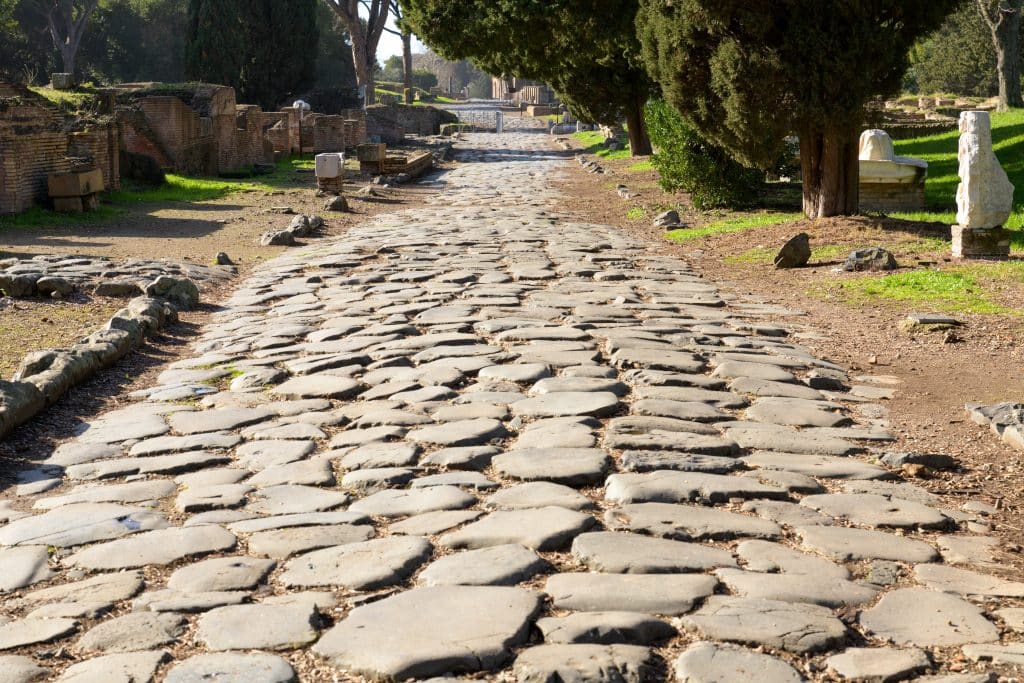
When you are walking the streets of Boston or NYC and admiring the antique cobblestone pavers, take a moment and thank the Roman Empire for helping make it happen. Although we often think of European cobblestone alleyways, the origins of antique cobblestone roads go back much further.
Building an Empire
While cobblestones can be dated back as far as 5000 BC Mesopotamia, it was the Romans that popularized their use in the vast network of roads they built to connect their massive empire. At its peak, it covered over 250,000 miles!

Maintaining control over territory that stretched from modern day Ireland to Iraq meant the ability to move as quickly and efficiently as possible. So, they put their armies to work surveying the best possible routes and then, quite literally, getting down in the mud.
Rome’s first road, The Appian Way, was started in 312 BC, and ran southeast across to the Adriatic Sea. Its completion led to the defeat of their Etruscan enemies, a momentous success, and convinced them that more of the same was the key to future expansion.

Antique Cobblestone Roads: Built to Last
Many of the original cobblestone roads the Romans constructed endure today. So, how did they do it?
First-the rudus, a layer of small stones and crushed brick, compacted with a mixture of lime and volcanic ash, which acted like concrete, provided a foundation.
Next, a layer of finer gravel or sand, the nucleus, was spread.
Finally, the pavementum, stones sourced as locally as possible, were placed in the nucleus, often set with more of the lime/ash mixture. The stones varied in shape and size at this time. In fact, it wasn’t until the 1500’s that uniform cobble pavers became the norm in Europe.

The roads were even engineered to account for drainage. The cobbles in the middle of the road were set slightly higher than those on the side to allow for runoff into ditches dug along the roadside. Even today, our roads and driveways are constructed with this principle in mind.
Building a Legacy
The lasting impact of the Roman Empire’s cobblestone road system can’t be overestimated.
- It was a channel for the integration and exchange of ideas and culture.
- It facilitated trade and military expansion, connecting Europe and parts of Asia and Africa for the first time.
- In terms of engineering, it was far ahead of anything achieved to that point, inspiring future road construction for centuries to come.
- In fact, the durability, longevity and technology of these cobblestone roads led directly to the modernization of Europe, the Enlightenment, Renaissance, and all that followed.
At Stone Farm, we think it’s amazing just how far back the origins of antique cobblestone can be traced. While those streets of Boston and NYC might contain cobble pavers of historic value in terms of centuries, it really is eye-opening to realize their roots can be traced to the ancient world and in terms of millennium.
Click here to learn more about Stone Farm’s available antique cobblestones.
